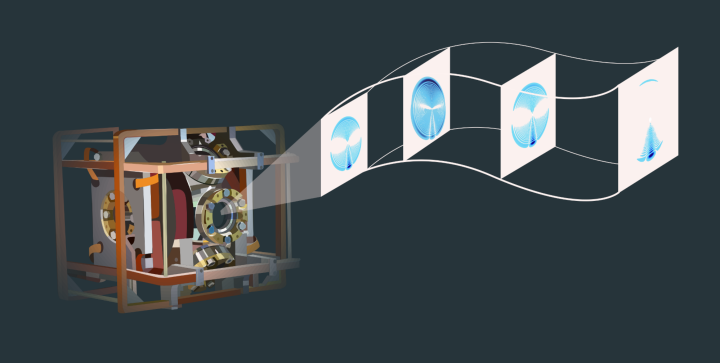Researchers from the 5th Institute of Physics at the University of Stuttgart were able to observe molecular vibrations in a so-called ion-Rydberg molecule for the first time. The results will be published in the renowned journal Physical Review Letters.
Simple molecules consist of two atoms, whose nuclei are only about a nanometer or even less apart. Dynamic processes at these tiny length scales are quite fast. For example, when the two atoms vibrate against each other, they do it far too quickly to be observed directly - on a time scale of one hundred trillionth of a second, or 10 -14 seconds.
The researchers were now able to observe a molecular vibration directly in an ion-Rydberg molecule. This particular molecule consists of a charged particle - an ion - and a so-called Rydberg atom. The latter has the special property that the outermost electron is located extremely far away from the atomic core. Compared to an atom in the ground state, it is huge. Due to dipole interactions, the ion and the Rydberg atom can form an exotic molecular bond, which the researchers recently observed at the same experimental setup. The special feature of this particular molecule is the huge distance between the atomic nuclei. The bond length of about 4 micrometers is several thousand times larger than in usual molecules. Because of its giant size, the ion-Rydberg molecule vibrates much slower than common molecules. This effect is so strong that the vibration of the molecule occurs on a microsecond time scale, opening the possibility to observe it directly. The giant molecule thus oscillates in slow motion.
The ion Rydberg molecule is generated in an ultracold cloud of rubidium atoms using precise laser systems. The molecular vibration is excited in a controlled manner by employing an electric field. With the help of a high-resolution ion microscope developed in the research group, it was possible to create a series of snapshots that image the molecule at different times during oscillation, thus showing the molecular vibration.
In the future, the methods developed could help to better understand dynamic processes in molecules and perhaps even enable the direct tracking of chemical reactions to the atomic level.
Original publication::
Yi-Quan Zou, Moritz Berngruber, Viraatt S. V. Anasuri, Nicolas Zuber, Florian Meinert, Robert Löw, Tilman Pfau
Observation of vibrational dynamics of orientated Rydberg-atom-ion molecules
Physical Review Letters 130, 023002 - Published 12.January 2023
| Contact |
|---|



